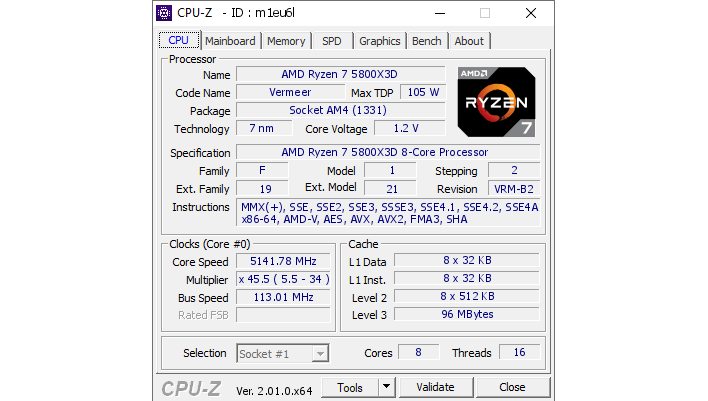What’s This? Ryzen 7 5800X3D Overclocked To 5.1GHz By MSI But There’s A Catch
AMD's Ryzen 7 5800X3D achieves incredible performance uplifts in certain applications by "simply" adding an extra 64MB of cache onto a Ryzen 7 5800X. We put "simply" in quotes because the vertical die stacking process employed on the chip is still cutting-edge stuff, and AMD had to make significant concessions to the original Ryzen chip's capabilities to allow it to work.
Those concessions came in the way of the chip's overclocking features, as well as a slice of its clock rate. Whether due to the cache die itself or the precarious bond between it and the Core Complex Die (CCD), AMD acknowledges that the Ryzen 7 5800X3D is less durable than the original recipe. It limited core voltage to just 1.3 volts on the new model, and also disabled Precision Boost Overdrive.
Precision Boost Overdrive is the package of features that most experienced Ryzen overclockers use to manipulate their processors' properties. Indeed, almost every Ryzen processor released to date has officially supported overclocking, and AMD offers a robust toolkit for tuning its chips. That toolkit isalmost entirely disabled on the Ryzen 7 5800X3D, which makes overclocking the cores rather difficult, though the memory and Infinity Fabric speeds can we altered.
On most motherboards, this isn't going to get you very far. Raising the base clock will start to break everything else in short order—even 1 MHz is enough to start disabling things like SATA controllers on some boards. Over at SkatterBencher, they were able to take a Ryzen 7 5800X3D from 4550 MHz to 4741 MHz with the help of an ASUS feature called Voltage Suspension. Still, this isn't a huge gain, and it only improved performance by about 4%.

TSAIK's CPU-Z validation.
To achieve that overclock, TSAIK had to raise the reference clock to 113 MHz. We don't know what compromises that required on the MSI MEG X570 GODLIKE board he was using, but we do know that it required him to use only a single 8GB memory module running at just 1,205 MHz (2410 MT/s). Essentially, it's a single stick running at JEDEC "safe" timings, and the only reason it's 1,205 MHz instead of 1,066 Mhz is because of the increased reference clock.
As such, this overclock is probably just for bragging rights, not for practical use. Indeed, given the base-clock-adjusting requirement for overclocking the Ryzen 7 5800X3D, it's unlikely to be a practical path for any owners of this CPU. Perhaps Robert Hallock was right after all.


